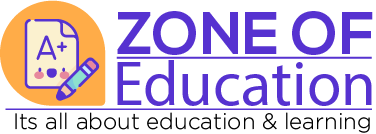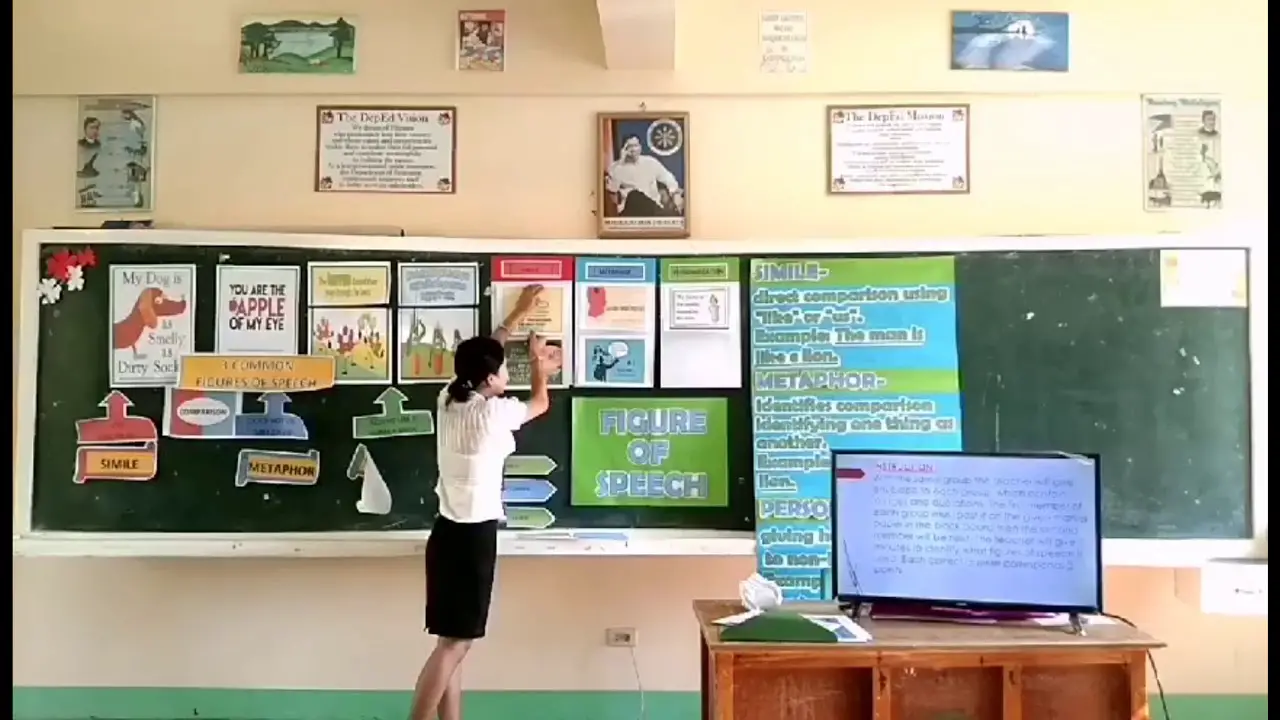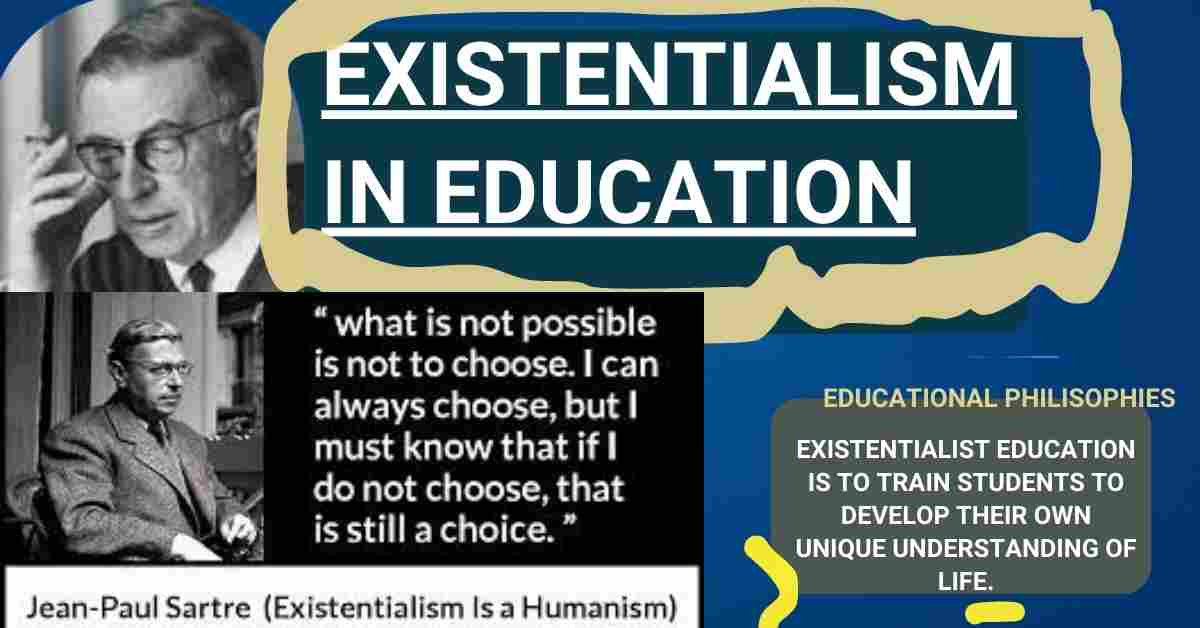Classroom Management for Effective Learning
What is Classroom Management?
As an educator, one of the important aspects of your role in the classroom is to improve classroom management.
But first, let me tell you what classroom Management is.
Classroom management refers to your practices and processes to establish an environment where instruction and learning can occur smoothly. It is not making students quiet and passive listeners but goes beyond maintaining discipline; it encompasses creating a supportive, engaging, and organized space that fosters student involvement and cooperation. In this article, we will explore the importance of classroom management and provide strategies for effective implementation.
Why Is Classroom Management Important?
Classroom management plays a pivotal role in students’ overall success. It establishes a conducive learning environment by instilling control and order. According to Wong (2004), effective classroom management involves the procedures and strategies teachers utilize to create an environment that enables students to learn and achieve. Let’s delve deeper into the significance of classroom management.
Key Elements of Classroom Management
Successful classroom management relies on several key elements contributing to an optimal learning experience. Implementing these elements into your teaching practices can maximize student engagement and foster a positive atmosphere for learning. Some of them are listed below.
Consistent Routine
Establishing a consistent and persistent routine helps create structure and predictability within the classroom. Students become familiar with the expectations and procedures, allowing them to focus on learning rather than disruptions. By starting each class with a designated activity, such as a writing activity on the board, students understand what is expected of them, promoting a silent and on-task start to the lesson.
- Procedures and routines provide structure for the classroom.
- Consistent routines minimize disruptions and maintain focus on learning.
- Students understand and fulfill expectations more effectively.
Effective Time Management
Efficient time management is crucial for maximizing learning opportunities. Once students are enabled to grasp the procedures and routines of the classroom, they can then work efficiently and without constant instructions. Active participation replaces passive waiting for the teacher’s announcements. Students actively engage in learning activities while you gain time for tasks such as attendance and resource preparation. Effective time management ensures that the daily agenda of the classroom remains unaffected.
- Students work efficiently when they understand classroom routines.
- Active participation replaces passive waiting for instructions.
- Effective time management allows for additional teaching opportunities.
Positive Atmosphere
A well-managed classroom creates a positive atmosphere that ultimately promotes student engagement. As a result, Students recognize you as the leader and facilitator of their learning journey. By implementing systematic procedures and routines, students feel comfortable and understand that you are there to support their growth. A friendly atmosphere encourages student interaction and fosters purposeful learning, while a negative and stressful environment hinders progress.
- A positive atmosphere fosters a supportive learning environment.
- Students feel comfortable and confident in their interactions.
- A friendly classroom atmosphere enhances the learning experience.
High Test Scores
Classroom management directly influences student performance and achievement. Teachers who effectively manage their classrooms inform students about the learning objectives and expectations. Demonstrating desired skills, providing practice opportunities, and ensuring students are well-prepared, empower them to perform well in assessments. Building confidence through effective management reflects positively in their test scores.
- Effective classroom management prepares students for assessments.
- Clear expectations and practice contribute to higher test scores.
- Building student confidence enhances their performance.
Student Impact
Effective classroom management significantly impacts student development, including behavior, organization skills, attitude, discipline, and overall achievement. When teachers possess strong management skills and effective communication strategies, students experience heightened intellectual growth. A well-managed classroom provides a nurturing environment that supports students’ academic development.
- Classroom management influences student behavior and discipline.
- Effective management fosters student organization and positive attitudes.
- A well-managed classroom nurtures intellectual growth.
Engage Students
Engaging students in the learning process is a fundamental goal of classroom management. Instead of merely memorizing information for tests, effective management encourages active participation, critical thinking, and creativity. Incorporating interactive activities, discussions, and question-answer sessions promotes deep understanding and meaningful learning experiences. Interacting with students during lectures and answering their questions enhances their confidence and learning effectiveness.
- Classroom management promotes active student engagement.
- Interactive activities enhance understanding and critical thinking.
- Engaging students fosters confidence and effective learning.
Preparation
Preparation is a vital aspect of effective classroom management. Coming to class well-prepared sets the tone for a successful learning experience. When prepared, teachers minimize disruptions and create a focused and organized environment. Teachers can navigate unexpected situations smoothly by having lesson plans readily available, ensuring that the learning process remains uninterrupted.
- Preparedness contributes to effective classroom management.
- Well-prepared teachers minimize disruptions and maintain focus.
- Lesson plans help navigate unexpected situations efficiently.
Strategies for Effective Classroom Management
Now that we understand the key elements of classroom management, let’s explore some strategies that can be implemented for effective leadership in the classroom. These strategies will help establish a supportive and engaging learning environment that maximizes student learning and achievement.
Establishing Clear Expectations and Rules
One of the fundamental aspects of effective classroom management is establishing clear expectations and rules. Students need to know what is expected of them regarding behavior, participation, and academic performance. By clearly communicating these expectations and regulations, students understand the boundaries and can actively engage in learning.
- Clear expectations and rules guide student behavior.
- Communicate expectations at the beginning of the year and reinforce them regularly.
- Involve students in establishing classroom rules for a sense of ownership.
Building Positive Relationships with Students
Building positive relationships with your students creates a supportive and inclusive classroom environment. Students are more likely to engage and cooperate when valued and respected. Take the time to get to know your students individually, show empathy, and provide support when needed. Positive relationships foster a sense of belonging and encourage students to participate in classroom activities actively.
- Foster positive relationships through open communication and empathy.
- Show interest in students’ lives and create a supportive classroom community.
- Provide individualized support and address students’ needs.
Creating an Engaging and Interactive Learning Environment
An engaging and interactive learning environment promotes student involvement and enthusiasm for learning. Incorporate various teaching strategies, such as hands-on activities, group discussions, and multimedia resources, to cater to different learning styles. Encourage students to actively participate in class by asking questions, sharing their ideas, and collaborating with their peers.
- Use a variety of teaching strategies to cater to different learning styles.
- Incorporate hands-on activities, group work, and multimedia resources.
- Encourage active participation and student engagement.
Implementing Effective Communication Techniques
Effective communication is key to successful classroom management. Communicate instructions, assignments, and expectations to students. Use verbal and non-verbal cues to convey information and maintain a positive and respectful tone. Actively listen to students’ questions and concerns, and provide constructive feedback to support their learning.
- Communicate instructions and expectations clearly and consistently.
- Use both verbal and non-verbal cues for effective communication.
- Actively listen to students and provide constructive feedback.
Using Appropriate Disciplinary Measures
Discipline is an integral part of classroom management. Establish a fair and consistent disciplinary system that addresses misbehavior and promotes a positive learning environment. Focus on teaching students self-discipline and problem-solving skills rather than relying on punitive measures. Utilize strategies such as positive reinforcement, logical consequences, and restorative practices to address behavioral issues.
- Establish a fair and consistent disciplinary system.
- Teach students self-discipline and problem-solving skills.
- Use positive reinforcement and logical consequences to address behavioral issues.
Providing Individualized Support and Differentiation
Each student is unique and may have different learning needs. Differentiate your instruction to accommodate diverse learners. Provide additional support and resources for students who require extra assistance while challenging and extending the learning for advanced students. Individualized support promotes student engagement and success.
- Differentiate instruction to meet the needs of diverse learners.
- Provide additional support for struggling students.
- Offer challenging opportunities for advanced learners.
Continuously Assessing and Adjusting Classroom Management Strategies
Effective classroom management requires ongoing assessment and adjustment. Regularly assess the effectiveness of your management strategies and make necessary modifications based on student feedback and outcomes. Reflect on your practices and seek professional development opportunities to enhance your classroom management skills.
- Regularly assess the effectiveness of your classroom management strategies.
- Seek student feedback and make adjustments accordingly.
- Engage in ongoing professional development to improve classroom management skills.
The Physical Layout of a Classroom
In this section, we will discuss the importance of goals set by the teacher for classroom management and how they contribute to creating a focused and productive learning environment.
- The physical layout of the classroom is important for productive learning.
- Different seating arrangement styles have advantages and disadvantages.
- The seating arrangement should consider the student’s needs and the taught subject.
The physical layout of a classroom refers to how the physical space is organized and arranged to support teaching and learning activities. It encompasses various elements, including furniture placement, seating arrangements, instructional materials, technology integration, and overall aesthetics. A well-designed physical layout can contribute significantly to a conducive learning environment and promote student engagement and interaction. Here is a detailed description of the physical structure of a classroom:
Furniture Placement: Placing furniture, such as desks, tables, and chairs, is an essential aspect of the physical layout. It should be carefully arranged to maximize space utilization, ensure ease of movement, and facilitate teacher-student and peer-to-peer interactions. Considerations include avoiding overcrowding, allowing for clear pathways, and providing sufficient space for students to work comfortably.
Seating Arrangements: The seating arrangement within a classroom can impact student engagement and collaboration. Different seating arrangements, such as traditional rows, clusters, or U-shape setups, can be used based on instructional needs and activities. Flexible seating options, such as standing desks, bean bags, or floor cushions, can also be incorporated to cater to individual student preferences and comfort.
Collaboration Areas: Designating specific areas or zones within the classroom for collaborative work can foster teamwork and peer interaction. This can include grouping desks, creating comfortable seating areas, or incorporating collaborative workstations. These areas should be easily accessible and designed to promote active student participation and discussion.
Designated Areas or Zones: Creating designated areas within the classroom for different purposes can enhance organization and efficiency. For example, having a reading corner with a cozy rug and bookshelves, a writing center with necessary supplies, or a science lab area with experiment materials can provide students with clear expectations and easy access to resources for specific activities.
Teacher’s Desk and Instructional Materials: The placement of the teacher’s desk and instructional materials is important for effective classroom management. The teacher’s desk should be positioned to have a clear view of the entire classroom, allowing for effective monitoring of student behavior and engagement. Instructional materials, such as a whiteboard or bulletin board, should be strategically placed for easy visibility and accessibility to support instructional delivery.
Classroom Accessibility: The physical layout should be designed with accessibility in mind to accommodate students with diverse needs. This includes ensuring wheelchair accessibility, providing adjustable furniture, and considering the placement of materials at appropriate heights for all students. Clear pathways and uncluttered spaces also create a safe and inclusive learning environment.
Integration of Technology: The physical layout should facilitate technology integration into instructional practices. This can include designated areas for computer workstations, interactive whiteboards, or device charging stations. Proper cable management and access to power outlets should also be considered to avoid tripping hazards and ensure the smooth functioning of technology tools.
Efficient Organization and Storage: The physical layout should include storage solutions that efficiently organize classroom materials and resources. This can involve having cabinets, shelves, or storage bins to neatly store books, supplies, manipulatives, and other teaching aids. Clearly labeled storage areas enable easy retrieval of materials and promote a clutter-free environment.
Aesthetics and Visual Appeal: Creating a visually appealing and stimulating learning environment through the physical layout can positively impact student motivation and engagement. This can be achieved by incorporating colorful displays of student work, educational posters, charts, and relevant visual aids. To create an inviting and pleasant atmosphere, attention should also be given to natural light, appropriate lighting fixtures, and overall cleanliness.
Safety and Emergency Preparedness: The physical layout should prioritize safety and emergency preparedness. Clear evacuation routes, visible fire extinguishers, and emergency contact information should be prominently displayed. Additionally, considerations should be made for placing first aid kits, safety protocols, and any necessary adaptations to accommodate students with specific safety needs.
Best Seating Arrangements for Effective Learning
The best seating arrangements for effective learning refer to strategically organizing desks or seating within a classroom that promotes student engagement, collaboration, and an optimal learning environment. These seating arrangements enhance student participation, interaction, and focus, ultimately supporting the lesson’s learning goals. The best seating arrangement can vary depending on the instructional objectives, classroom dynamics, and the nature of the learning activities being conducted.
Factors for best seating arrangements
Some factors to consider when determining the best seating arrangements include:
Student Engagement: The seating arrangement should encourage active student engagement in the learning process. It should facilitate opportunities for students to ask questions, participate in discussions, and contribute to group activities.
Collaboration and Interaction: An effective seating arrangement promotes collaboration among students. It should facilitate group work, cooperative learning, and peer-to-peer interaction, allowing students to share ideas, discuss concepts, and collaborate on projects.
Visibility and Access to Instruction: The seating arrangement should ensure that all students have clear visibility of the teacher, instructional materials, and audiovisual aids. This allows students to effectively receive instruction, observe demonstrations, and engage in class discussions.
Classroom Management: The seating arrangement should support effective classroom management. It should enable the teacher to monitor and supervise students easily, promote a positive and respectful learning environment, and minimize distractions or disruptive behavior.
Flexibility and Adaptability: The best seating arrangements are often flexible and adaptable to accommodate different learning activities and instructional approaches. They can be modified or rearranged based on the specific needs of the lesson, allowing for individual, small-group, or whole-class interactions as required.
Inclusivity: Consideration should be given to creating an inclusive seating arrangement that accommodates students’ diverse needs. This may involve providing options for alternative seating arrangements, considering accessibility for students with disabilities, and creating an environment that fosters a sense of belonging for all learners.
Types of Seating Arrangments
There are different types of seating arrangements, but some of them are listed below. You can adapt the best-suited configuration for your classroom but keep in mind all the above points for better results and classroom management.
Rows
In the traditional rows seating arrangement, desks are aligned in rows facing the front of the classroom. This layout allows all students a clear view of the blackboard and facilitates movement for both the teacher and students. The teacher can easily provide individual assistance to students. However, group activities may be challenging in this arrangement, and students may have increased opportunities for passing notes.
- Advantages:
- Easy visibility of the blackboard for all students.
- Facilitates movement for teachers and students.
- Allows for immediate individual assistance from the teacher.
- Disadvantages:
- Challenging for group activities.
- Increased possibility of passing notes.
- Students may feel under constant supervision.
Circle
The circle seating arrangement involves arranging desks in a circular shape, emphasizing a sense of group participation. This layout encourages maximum interaction among students and promotes class discussions. However, students sitting on the sides may have limited visibility on the blackboard.
- Advantages:
- Ensures maximum participation in class discussions.
- Enhances interaction among classmates.
- Facilitates the teacher’s focus on the entire class as a group.
- Disadvantages:
- Limited visibility of the blackboard for some students.
- Increased potential for discipline issues.
U-Style
The U-style or horseshoe seating arrangement combines elements of both the circle and row designs. The desks are arranged in a U-shape, allowing for group assignments, discussions, and lectures. All students have clear visibility of the blackboard, and the teacher’s desk is usually positioned at the center. This arrangement provides a spacious classroom environment that facilitates teacher and student movement.
- Advantages:
- Suitable for group activities and discussions.
- Clear visibility of the blackboard for all students.
- Students focus on the teacher during lessons.
- Creates more space for movement within the classroom.
- Disadvantages:
- Limited mobility for students in the seats closest to each other.
- Potential for disturbance among problematic students.
Clusters
Clusters’ seating arrangement involves dividing the classroom into small groups of desks, typically four or five desks per group. This arrangement allows for small group work and easy rearrangement when necessary. Students can see the blackboard easily but may also be distracted by observing other groups. Clusters are often arranged around the teacher’s desk for easy supervision.
- Advantages:
- Suitable for primary-level classrooms.
- Facilitates small group activities.
- Easy shuffling of students within small groups.
- Clear visibility of the blackboard for all students.
- Disadvantages:
- Potential gathering of problematic students in one group.
- Potential for students to focus on each other rather than learning.
- Time-consuming when changing groups frequently.
Pair Seating
Pair seating involves two students sitting together at one table, with separate tables for each student. The arrangement allows the teacher to move freely around the class and provides an opportunity for individualized attention. Pair seating is suitable for individual activities and assessments, promoting independence and accountability among students. However, students sitting in the corners may have limited visibility on the blackboard.
- Advantages:
- Suitable for individual activities and assessments.
- Provides individual attention to weaker students.
- Promotes independence and individual accountability.
- The teacher can move freely within the class.
- Disadvantages:
- Potential academic loss for students sitting in isolation.
- Limited learning from peers.
- Limited visibility of the blackboard for students in the corners.
Semi-Circle
In the semi-circle seating arrangement, desks are arranged in a semi-circular shape, with all desks touching each other and facing the front of the room. This arrangement facilitates face-to-face interaction between students and the teacher, ensuring clear visibility of instructional aids. Different teaching methods can be implemented effectively, such as direct instruction, discussions, and group activities. However, it may be challenging for the teacher to provide individual attention to each student.
- Advantages:
- Maximum face-to-face interaction between teacher and students.
- Allows for various teaching methods.
- Easy monitoring of students’ work.
- Suitable for group projects.
- Clear visibility of instructional aids.
- Disadvantages:
- Not suitable for primary-level classes.
- Reduced individual attention for students sitting in the middle.
- Possibility of discipline issues.
Key Points:
- The physical arrangement of the classroom can impact student behavior and learning.
- Considerations for classroom arrangement include eye contact, room dividers, instructional aids, unhindered passageways for teachers, student traffic, student space, student access to materials, restricted access, and minimizing interruptions.
- The arrangement should support teacher-student and student-student interactions and provide easy access to instructional materials.
- Minimizing distractions and maximizing access to resources and demonstrations are important factors.
- Classroom arrangement should be aligned with the lesson’s objectives and instructional style.
Conditions for Seating Arrangements in The Classroom
The physical arrangement of the classroom plays a crucial role in supporting effective teaching and learning. A well-organized and functional classroom layout can enhance student engagement and minimize distractions. Here are some important considerations for classroom arrangement:
- Eye Contact: All students need to have a clear line of sight to the teacher and for the teacher to be able to see all students. Avoid having students sit with their backs to the teacher during instruction. To ensure this, the teacher can occupy each seat in the classroom when students are not present to check visibility.
- Room Dividers: If the classroom has dividers such as bookshelves, ensure they are short enough for the teacher to observe students in any school area. This allows for better supervision and monitoring.
- Instructional Aids: Position instructional aids, such as the board or overhead projector, to ensure all students can see them. This promotes visual access to important information and materials.
- Unhindered Passageways for Teachers: The classroom arrangement should provide sufficient space for the teacher to move freely around the room, between students or groups, to provide assistance and monitor their work. This movement supports on-task behavior and enables effective teacher-student interaction. Test the classroom arrangement by moving around when students are absent to ensure there are no obstacles.
- Student Traffic: Identify high-traffic areas in the classroom, such as the teacher’s table, the trashcan, the pencil sharpener, doors, and windows. Ensure easy student access and movement in these areas to minimize disruptions and distractions.
- Student Space: For independent seatwork, provide sufficient separation between individuals to allow students to focus on tasks without interference. This helps create a conducive environment for individual work and concentration.
- Student Access to Materials: Arrange materials used by students in a location that is easily accessible to all students. The clear and unhindered movement to and from this area should be facilitated. Consider designing a designated area or corner where materials for the day’s lessons or subjects are placed, allowing students to access them independently.
- Restricted Access: Store materials that are not meant for student use in a location inaccessible by students. This helps maintain the organization of materials and avoids potential disruptions.
- Interruptions: Remove unnecessary objects and materials from the classroom or keep them stored away to reduce distractions. Consider the placement of doors, windows, other students, reading groups, or classroom pets, and ensure they are not sources of distraction for students.
Components of Classroom Management
The components of classroom management are:
- Classroom Design: Planning and arranging the physical layout of the classroom to create a conducive learning environment.
- Rules of the Classroom: Establishing clear and specific rules that promote student respect, care, and unity.
- Discipline: Implementing consistent consequences for students’ actions and maintaining a firm, fair, and respectful approach to discipline.
- Scheduling of Classroom: Managing time effectively ensures smooth transitions between activities and provides ample time for instruction and student work.
- Organization of Classroom: To optimize teaching and learning, keep the classroom and instructional materials well-organized.
- Instructional Technique: Utilizing effective teaching strategies and methods that cater to the grade level and subject area and considering students’ learning styles.
- Communication of Teacher: Maintaining clear and open lines of communication with students, colleagues, parents, and administrators.
- Learning Goals: Communicating and explaining learning goals to students and providing regular feedback to assess their progress.
- Routines of Classroom: Establishing consistent daily practices and procedures to create a structured and predictable learning environment.
- Classroom Rules and Social Expectations: Establish clear and social expectations to minimize disruptive behavior and promote a positive and respectful classroom culture.
- Correction and Discipline: Addressing misbehavior consistently and fairly, using a range of corrective measures that align with the severity of the behavior.
- Encouragement and Praise: Recognizing and reinforcing positive behavior and achievements through praise and incentives.
- Consistency: Maintaining consistency in classroom management, including expectations, consequences, and student interactions.







[…] direct instruction in the classroom involves implementing specific strategies and techniques to deliver explicit and structured lessons effectively. Here are some steps to […]
[…] Existentialism is a powerful teaching method focusing on creativity, originality, and personal growth. Using the Socratic Method, teachers can help students find their identities and ways of looking at the world, emphasizing individuality and creativity. Having students engage in existentialist thinking is one of the most effective ways to foster creativity, originality, and personal growth in students. This way of teaching is based on the idea that every student has unique skills, experiences, and points of view that can be developed and used to make a better life. Below, I will explore the critical elements of teaching existentialist theory and how they can be applied in the classroom. […]
[…] CLT’s emphasis on real-life communication may need to align better with exam-oriented strategies prioritizing specific language components and test formats. This misalignment can create challenges for learners preparing for standardized […]
[…] Inquiry-based teaching techniques have gained recognition in education for fostering curiosity, critical thinking, and a deep understanding of concepts. Inquiry-based approaches encourage active exploration, questioning, and problem-solving by placing students at the center of the learning process. This article explores the concept of inquiry-based teaching, highlights its benefits, provides examples of inquiry-based techniques, and discusses strategies for implementing them effectively in the classroom. […]
[…] essential component of successful classroom management in elementary schools is building positive relationships with students. Teachers who establish […]
[…] as they embark on their careers. Understanding their needs is essential in developing effective classroom management strategies tailored to their circumstances. New teachers can benefit from mentorship programs, professional […]
[…] while bodily-kinesthetic learners will benefit from hands-on activities. Incorporating these strategies into the classroom creates an environment that celebrates and nurtures students’ diverse intelligence while […]
[…] let’s work together to implement these behavior management strategies in our classrooms. We can create an environment where everyone thrives and succeeds with little […]
[…] classroom management has some critics who say it can be too strict and limit students’ creativity and freedom. But […]
[…] Components of Classroom Management […]
[…] successful classroom strategies are contracts, consequences, punishment and others that have been described in detail earlier. […]
[…] needs, preferences, and learning styles of individual students. Personalized learning involves such type of instruction strategy that accommodates the diverse needs and interests of each learner, fostering an environment where […]
[…] ready for success in the 21st century. Teachers can use project-based learning effectively in their classrooms if they follow the steps in this article and use good ideas and strategies. […]
[…] and educational outcomes. It addresses practical issues in education, such as student motivation, classroom management, instructional strategies, and educational interventions, which are central concerns of social […]
[…] Setting high expectations, nurturing positive relationships, and providing adequate support are key components of effective classroom management. Incorporating restorative practices can also help build social bonds and promote a sense of safety […]
[…] Classroom management is significantly impacted by learner-centred teaching. To encourage participation and active engagement, teachers should work to create a welcoming and inclusive learning environment. In addition, they ought to give students a chance to pursue their interests and passions and opportunities for teamwork and collaboration. […]
[…] Strategies for addressing diverse student needs in classroom management include differentiating instruction to accommodate varying learning styles and abilities, implementing individualized behavior plans for students with specific needs, fostering a culturally responsive classroom environment that values and respects diverse backgrounds, providing appropriate support and accommodations for students with disabilities or language barriers, and promoting inclusive practices that embrace the strengths and interests of all learners. […]